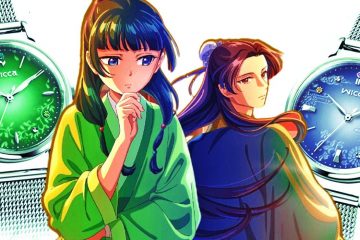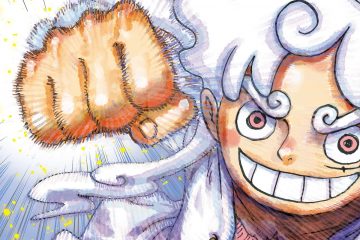Dragon Ball is set to return this year with Dragon Ball DAIMA. In the upcoming series, Son Goku and friends were magically reverted to kids by a mysterious foe. Together, the infantilized Z Fighters and their allies must find out who their new enemy is, and defeat them to return to their normal selves. Typically, the announcement of a new Dragon Ball show would spark excitement among fans. However, the opposite actually happened. While some fans were excited to finally see Dragon Ball do something new, others were angry that Dragon Ball dared ditch its signature fighting formula in favor of catering to a very young audience.These aggrieved fans saw Dragon Ball DAIMA’s mere existence as a personal slight, and a betrayal of everything they loved about Dragon Ball. Not helping matters was how Dragon Ball DAIMA pushed back the release and making of a hypothetical Dragon Ball Super follow-up, and that it was literally Dragon Ball: Babies. It also doesn’t help that turning a long-running franchise’s stars into babies is seen by many as a sign of desperation. Besides the fact Dragon Ball DAIMA has yet to release an episode as of this writing, it would be unfair to quickly dismiss it just because it took a drastic change. Dragon Ball DAIMA isn’t just a good return to form for Dragon Ball, but the franchise’s much-needed soft reboot.The original Dragon Ball is the rare anime whose sequel didn’t just surpass it, but outright buried it. This was due to the very specific string of circumstances that surrounded each Dragon Ball anime’s release. When Dragon Ball began airing in 1986, it became one of (if not) the biggest children’s franchises in Japan, but nowhere else. At the time, anime was mostly exclusive to Japan. The few anime that were exported barely made an impact, or they were butchered into infamous guilty pleasures thanks to questionable localizations (see: Warriors of the Wind, aka the American Nausicaäof the Valley of the Wind). Dragon Ball made it to American televisions relatively unscathed, but its dub was canceled after just one season due to low ratings. Dragon Ball was a big deal in Japan, but it was quickly forgotten elsewhere. But by the time Dragon Ball Z aired internationally in the ’90s, the global perception of anime had changed drastically for the better. Dragon Ball Z was a smash hit in Japan and around the globe. The latter was accomplished in part by Funimation’s now-legendary Dragon Ball Z dub. Dragon Ball Z catapulted the Dragon Ball name and franchise into worldwide stardom, and it played a big part in making anime popular and respected. However, Dragon Ball Z’s success also overshadowed Dragon Ball to the point where some fans only realized that Dragon Ball Z was a sequel years later. Some fans even went as far as rejecting Dragon Ball’s very existence, and acting as if Dragon Ball Z was always the story’s beginning.
Dragon Ball is set to return this year with Dragon Ball DAIMA. In the upcoming series, Son Goku and friends were magically reverted to kids by a mysterious foe. Together, the infantilized Z Fighters and their allies must find out who their new enemy is, and defeat them to return to their normal selves. Typically, the announcement of a new Dragon Ball show would spark excitement among fans. However, the opposite actually happened. While some fans were excited to finally see Dragon Ball do something new, others were angry that Dragon Ball dared ditch its signature fighting formula in favor of catering to a very young audience.
These aggrieved fans saw Dragon Ball DAIMA’s mere existence as a personal slight, and a betrayal of everything they loved about Dragon Ball. Not helping matters was how Dragon Ball DAIMA pushed back the release and making of a hypothetical Dragon Ball Super follow-up, and that it was literally Dragon Ball: Babies. It also doesn’t help that turning a long-running franchise’s stars into babies is seen by many as a sign of desperation. Besides the fact Dragon Ball DAIMA has yet to release an episode as of this writing, it would be unfair to quickly dismiss it just because it took a drastic change. Dragon Ball DAIMA isn’t just a good return to form for Dragon Ball, but the franchise’s much-needed soft reboot.
The original Dragon Ball is the rare anime whose sequel didn’t just surpass it, but outright buried it. This was due to the very specific string of circumstances that surrounded each Dragon Ball anime’s release. When Dragon Ball began airing in 1986, it became one of (if not) the biggest children’s franchises in Japan, but nowhere else. At the time, anime was mostly exclusive to Japan. The few anime that were exported barely made an impact, or they were butchered into infamous guilty pleasures thanks to questionable localizations (see: Warriors of the Wind, aka the American Nausicaäof the Valley of the Wind). Dragon Ball made it to American televisions relatively unscathed, but its dub was canceled after just one season due to low ratings. Dragon Ball was a big deal in Japan, but it was quickly forgotten elsewhere. But by the time Dragon Ball Z aired internationally in the ’90s, the global perception of anime had changed drastically for the better. Dragon Ball Z was a smash hit in Japan and around the globe. The latter was accomplished in part by Funimation’s now-legendary Dragon Ball Z dub. Dragon Ball Z catapulted the Dragon Ball name and franchise into worldwide stardom, and it played a big part in making anime popular and respected. However, Dragon Ball Z’s success also overshadowed Dragon Ball to the point where some fans only realized that Dragon Ball Z was a sequel years later. Some fans even went as far as rejecting Dragon Ball’s very existence, and acting as if Dragon Ball Z was always the story’s beginning.
#Dragon #Ball #Daima #Bring #Franchise #Roots
Note:- (Not all news on the site expresses the point of view of the site, but we transmit this news automatically and translate it through programmatic technology on the site and not from a human editor. The content is auto-generated from a syndicated feed.))



